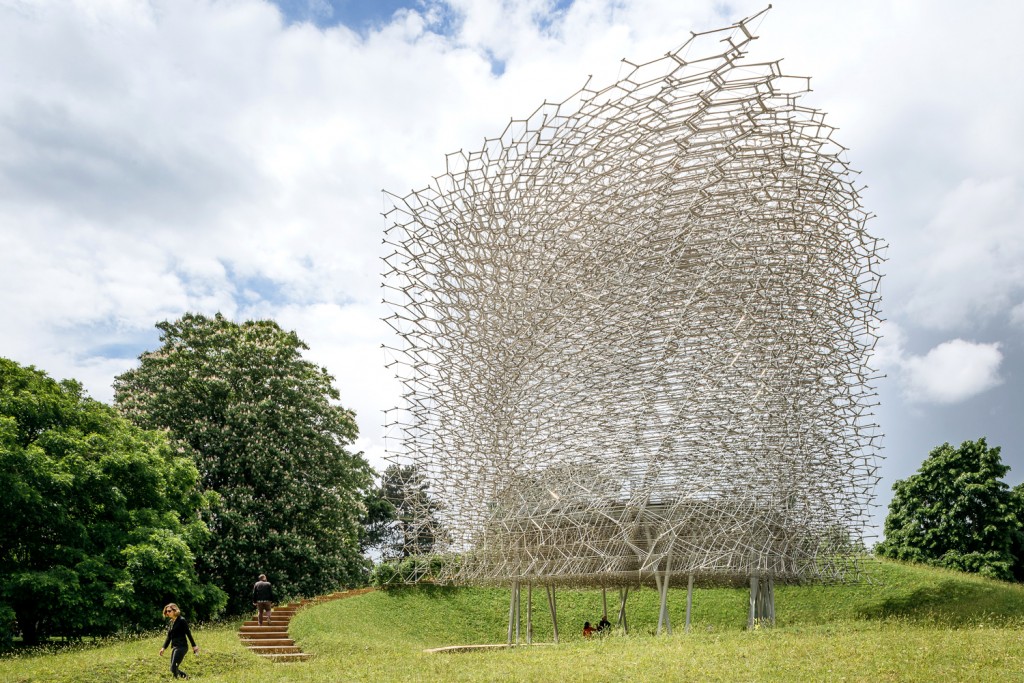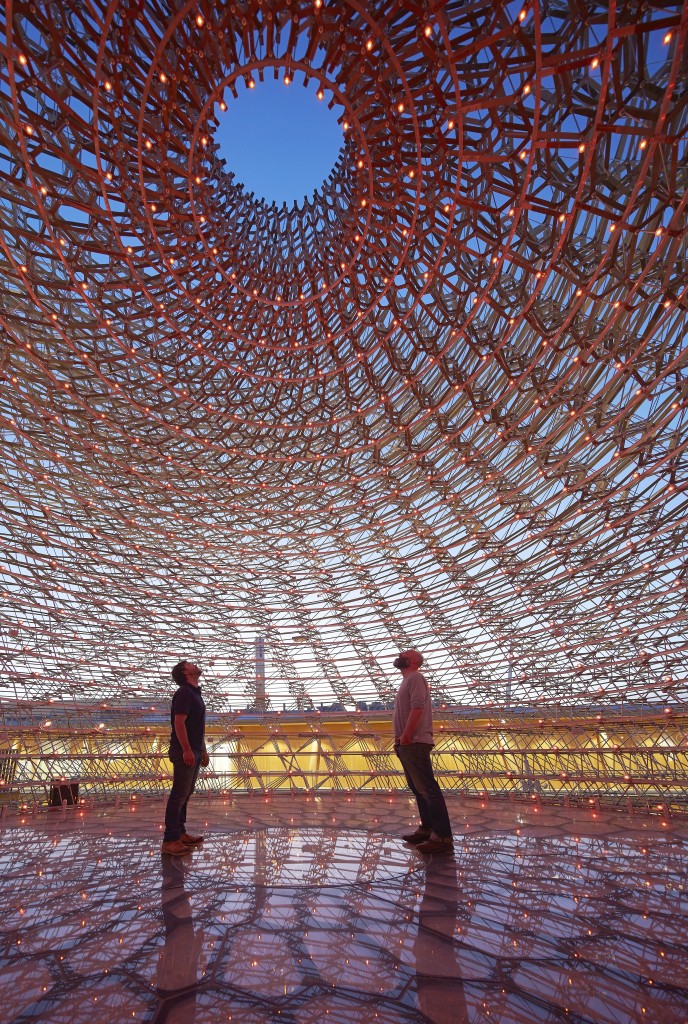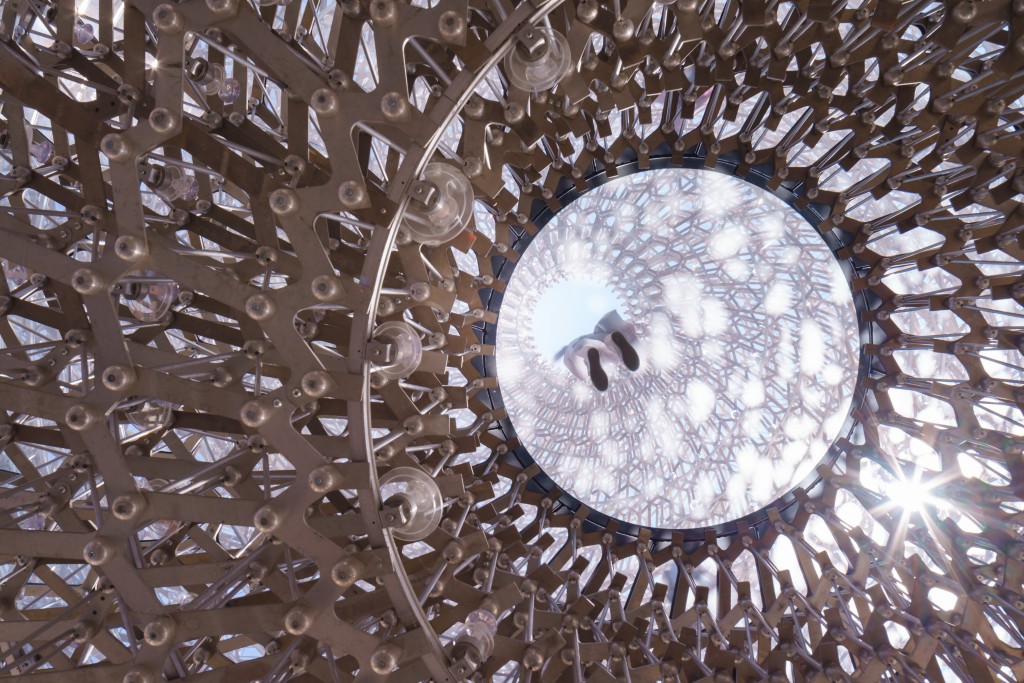
A 56-foot art installation constructed of aluminum components, known as the Hive, was installed at the Kew Royal Botanical Gardens in London, U.K. Inspired by scientific research into the health of bees, British artist Wolfgang Buttress designed the structure to respond to the real-time activity of bees from in a nearby beehive at Kew. As the energy levels inside the real beehive surge, the sound and light intensity within the space changes, providing visitors with insight into life inside a bee colony. The Hive has won multiple awards and has become a visual symbol of the pollinators’ role in feeding the planet and the challenges facing bees today.
“My approach to a sculpture seeks to frame nature so one can experience it more intimately,” Buttress told The Guardian. “I want visitors to feel enveloped, wrapped-up and involved in the experience, rather than adopting the position of an external observer.” The Hive was originally created as the centerpiece of the UK Pavilion at the 2015 Milan Expo.
Aluminum Hums
The Hive features 170,000 suspended aluminum pieces presented in an intricate hive-like structure that resembles a swarm of bees from a distance. The lattice structure is fitted with hundreds of LED lights that glow and fade as a unique soundtrack hums and buzzes around visitors.
Buttress explained that aluminum was selected for the Hive for many reasons, including its light weight, favorable structural properties, cost compared to alternatives such as stainless steel, corrosion resistance and durability, and machinability. Also, as the Hive needed to be dismantled and relocated after the Milan Expo, it made sense to use a mechanical fixing strategy based-upon machined components. The aluminum was water-jet cut and machined by Stage One, the contractors who built the pavilion.
“Using aluminium allowed the Hive to be relatively lightweight,” said Buttress. “Within the Hive, the visitor has this sense that the whole structure is subtly oscillating, in response to the movement of both visitors and also the signals from a living beehive to which it is connected. The Hive was engineered and optimized by Simmonds Studio engineers to minimize material redundancy. This feeling of lightness and sensitivity is and important factor in the experience. The materials selected for the pavilion were generally unprocessed enabling them to patinate naturally over time. Rawness was a key principle. Once built, the weather takes over and the materiality of the pavilion continued to evolve. Unprocessed aluminium was an important part of this strategy and the material palette of the project.

Accelerometers Translate Bee Activity
A crucial part of the Hive experience, are the small accelerometers, or vibration sensors, that are placed in a beehive at Kew to measure the activity of the bee colony. The accelerometers pick up the vibrations from activity of the bees and sends this in real-time to the Hive. The vibrational signals are converted into lighting effects through 1,000 LED lights that line the interior of the Hive, which become a visual representation of the bee colony’s activity.
In addition, a soundscape composed of bee sounds and an ensemble of musicians plays alongside the changing lights. To add to the experience, bone conductors have been installed in the area under The Hive, which convert the sound into vibrations which, when touched with a wooden stick, travel directly to the skull, and represent the secrets of bee communication through vibrations. This form of communication between honey bees was only recently discovered by scientists at Nottingham Trent University, led by Dr Martin Bencsik, which was an influencing force behind Buttress’s design of The Hive.
The Hive will be open to the public in the Kew Gardens from June 18 until November 2017.

